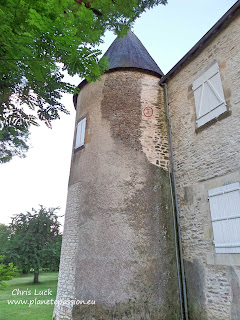It’s not that Asian Hornets
venom is anymore toxic than our native hornet and wasps, or even that they are more
aggressive away from their nest. It’s more about where Asian Hornets are
increasingly choosing to make their nest.
I’ve chosen a few recent
cases to illustrate this.
In Montmorillon,
Vienne , a 76 year old man was stung more than 30 times by Asian Hornets in his
garden when cutting a small hedge outside his house on the 30th of
October 2019 .
When his wife came to his
assistance he was covered in hornets and she was stung 5 times before
neighbours arrived with thick clothing and managed with the use of wasp sprays
to get him away from them. He was transported to the hospital by the Pompiers
to receive treatment.
The couple had never noticed the
presence of the hornets in the hedge which is about 50cm high.
Earlier in the year on 1st
August, in the Nantes area another man was stung more than 10 times when he
disturbed an Asian Hornet nest in the water meter box and fortunately suffered no serious
effects, however the day before at Grayan-et-l'Hôpital, Gironde, a woman died
following multiple stings when she disturbed an Asian Hornet nest at about 1.5
metres from the ground when going to her post box.
In these and most other cases
attacks occur when nests are disturbed, whether that is Wasps, Bees or Hornets.
I have myself suffered the consequences of putting a brush cutter into a wasp
nest at ground level and know how easy it is to hack away without first looking
for any obvious nest activity.
What’s becoming increasingly
clear for anyone that has been following the evolving situation with Asian
Hornets year on year is that they are increasingly making their nests close to
the ground. This inevitably leads to an increase in attacks. (European Hornet
nests are always under cover in buildings or hollow trees making accidental
disturbance less likely).
Other than in a handful of
cases a year in France
Chris























